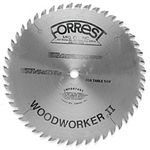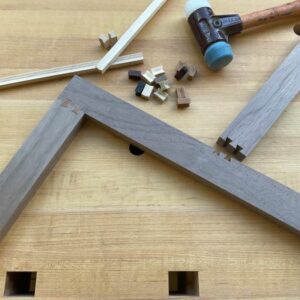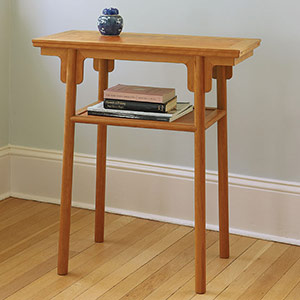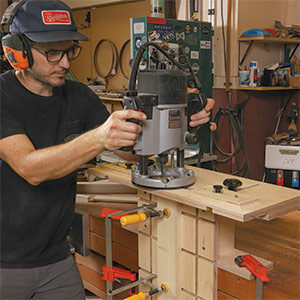Joinery Shootout
We push 18 popular frame joints to the breaking point
Synopsis: When designing a piece of furniture, how do you decide on the joinery? Chances are aesthetics, efficiency, and available tools factor into the decision. But so does strength. Fine Woodworking teamed up with a group of research engineers to test 18 popular frame joints and see which is strongest. We made five sets each of 18 different types of joints in cherry, a species used often by furniture makers. The samples were placed in a servo-hydraulic materials testing machine–essentially a hydraulic ram hooked up to a computer to record force and movement–and broken. Which ones were sturdiest? The results will surprise you.
Learn more about our testing in this short video.
From Fine Woodworking #203
When it comes to making furniture, woodworkers typically base their joinery preferences on aesthetics, efficiency, and available tools. However, joint strength also is a primary concern; after all, we want our furniture to last generations, without embarrassing joint failures. But how do you know which joint is strongest?
In an attempt to provide some insight, Fine Woodworking teamed up with a group of research engineers at a lab in Providence, R.I., to break … er … test a bunch of common woodworking joints.
This sounds straightforward on the surface, but many joints have specific applications within woodworking. So, to simplify things and facilitate comparisons, we focused on a single application that appears in a variety of furniture forms and offers many joinery options: the frame joint. Unlike a standing type of joint such as a dovetail or box joint, which is most often used to attach case or box sides, the frame joint is a flat connection typically used to construct face frames, doors, and other frame-and-panel assemblies. Table and chair joints would also fall roughly into this category. We made five sets each of 18 different types of joints using cherry, a species used often by furniture makers. All of the samples were 3⁄4 in. thick by 2 1⁄2 in. wide by 8 in. long, and all were cut by machine to close tolerances. We did break out hand tools to clean up shoulders and to chamfer the tips of tenons slightly so they would slide more easily into their mortises.
All of the joints were glued with Titebond III waterproof Type-I polyvinyl acetate (PVA) adhesive, the peak performer in our recent test (“How Strong Is Your Glue?” FWW #192). Per the manufacturer’s instructions, we clamped the joints for at least an hour, and let them cure for five days before shipping them to the lab.
The joints were tested to failure in compression using a servohydraulic materials testing machine—essentially a powerful hydraulic ram mounted in a rigid load frame. The test was designed to simulate a racking load, the most common cause of failure in frame joints. As the joints were tested, we recorded actuator displacement and resultant force using a computerized digital data acquisition system. Then we analyzed the data to generate numbers for the average peak strength (the force at which the joint failed) for each type of joint. We also inspected the joints to determine how they’d failed.
Some surprises at the top and bottom: Before the test, we surveyed the Fine Woodworking staff and our online audience at FineWoodworking.com to find out which joint they’d predict to be strongest. Among editors, the pinned mortise and tenon was picked to finish first (it was a close race). Folks who took our online poll predicted the regular mortise and tenon would be king. It turns out, however, that the half-lap joint proved strongest in our test, with the stub tenon bringing up the rear.
For the full article, download the PDF below:
Fine Woodworking Recommended Products

Rikon 10-3061 10-in. Deluxe Bandsaw
The saw has two speeds: 3,280 sfpm (surface feet per minute) for wood and 1,515 sfpm for soft metals and some plastics.

Forrest Woodworker II Blade

Veritas Precision Square





















Comments
"A BETTER WAY TO SPLINE A MITER", shown on bottom of page 38, is my preferred method because it it is quick, strong, and attractive for picture frames and kitchen cabinets (see photo). If you had included this joint in your testing it would likely be the strongest joint due to large glue area. Perhaps you can test and add as an addendum to this excellent article.
“[Deleted]”
As actual as ever these days when half the internet seems to think the butt joint or even end-to-end grain joint is the strongest of them all....
Log in or create an account to post a comment.
Sign up Log in